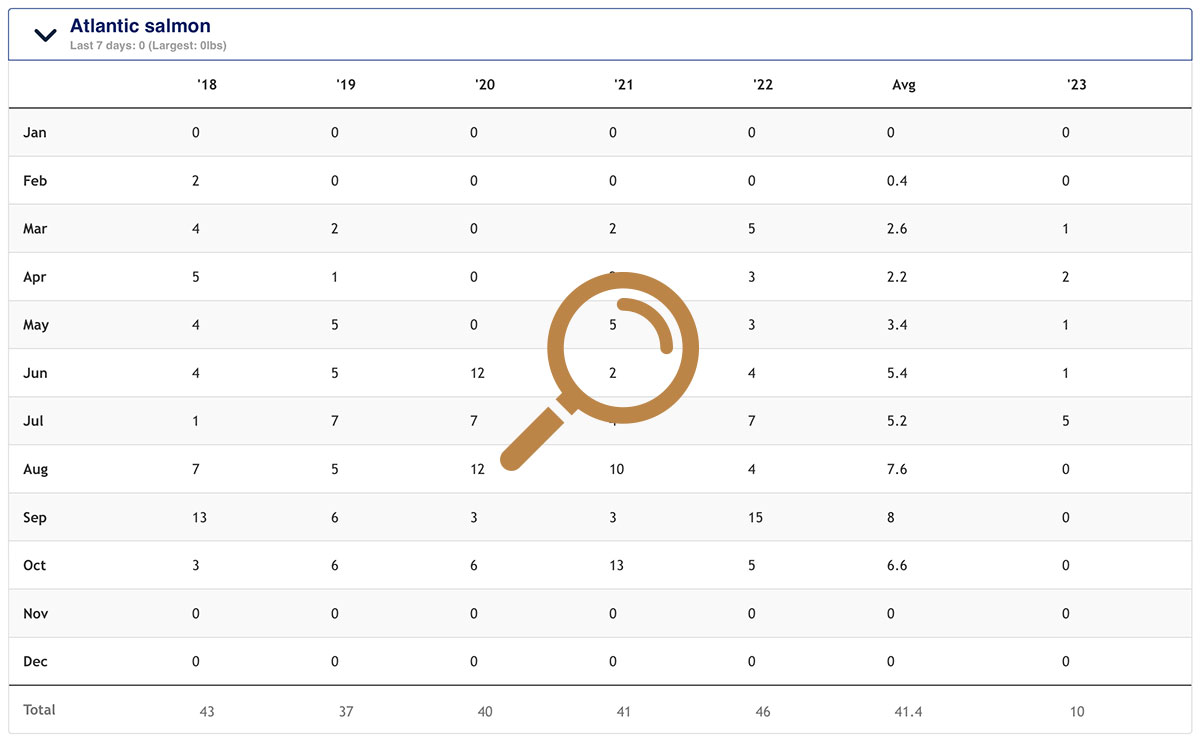SALMON FISHING
Our beat provides some of the most impressive and respected salmon fishings on the middle Tay. Bounded by Kinnarid, up river and Dalmarnock down river, it provides some excellent holding water. It stretches from Kincraigie Burn to Rotmell and marches with the Dalmarnock Beat. It is fishable both by boat and wading, as well as from the bank, over which there is excellent access. Dalguise provides a great variety of water and can be fished at most heights, providing entertaining sport of the highest quality. There are many pools and streams on the beat. Favoured areas include: Guay Pool, Tail of Guay, Boils, Flats, Casting Platform, Neck of Bridge Pool, Tail of Bridge Pool, Dowally Stream, Calum’s Corner, Island Pool, Tail of Island, Neck of Otterstone, Otterstone, Tail of Otterstone and Sarah’s Spot.
THERE IS ALWAYS TIME FOR ONE MORE CAST
Dalguise provides excellent but reasonably priced salmon fishing for a maximum of seven bank rods with the option, at no additional cost, of using the boat for the purposes of ‘harling’ should the water conditions dictate (mainly early or late season and at the sole discretion of the Ghillie). The whole beat is easily fished either from bank or wading. Dalguise is one of the most attractive beats on the middle Tay offering a wide variety of fishing. Its catches have been remarkably consistent. The beat easily holds it own alongside its mid-Tay counterparts with regards to catches. There is excellent bank side access to all pools and guests often comment on how well maintained Dalguise is, with maintenance emphatically completed with the needs of the fisher in mind.
TROUT FISHING – Please contact us direct with any enquiries regarding available trout fishing to discuss information further.
FISHING METHODS
Approximately half of the fish are caught on fly, the balance by lure and bait. Dalguise has led the way in catch and release with 88% being returned last season, in line with the catch and release recommendations of the Tay Salmon Fisheries Board.
FLY FISHING
During the summer months water temperatures usually begin to rise on the river. The fish also start to become a bit more active. Often river levels are low but on the River Tay they are never too low that fresh fish cannot run the system. At this time of year full floating lines coupled with polyleaders of various sink rates can often work well. As the Tay is a big river usually a powerful fourteen or fifteen-foot rod with a ten-line rating will cover almost any eventuality. In terms of lines whether that be a full Spey line or Shooting head system a floating line coupled with a selection of polyleaders of various sink rates is perfect for the job at this time of year. In higher water during the summer months a sink tip or intermediate line may be required to produce the best results. Make sure that your fly reel has got an adequate backing capacity and a good reliable drag system.
SPINNING
A powerful spinning rod between ten and eleven foot is usually more than adequate to cover the River Tay. The rod should be able to comfortably cast lures weighing anything from eighteen to thirty grams. A good fixed spool or multiplier reel with a reliable drag system is perfect for the River Tay. The reel should be able to accommodate a large amount of either nylon or braided line with an adequate breaking strain. In terms of lures, spoons like the Toby, Salmo Toby and Blair variety work well on the river. These can range in weight from eighteen to thirty grams. Devon Minnows can also be effective on the River Tay. During the summer months, the Floating Devon and Flying C can be particularly productive. The Flying C lure can be fished upstream especially when water temperatures start to rise and often salmon will chase the lure before taking it. The Vision110 lures have also got a good reputation for producing fish on the river. These lures can be excellent during the summer months.
HARLING
Harling is a method unique to the River Tay which involves fishing from a motorised boat. This method is employed on many beats and can be highly effective. Usually two or three rods are placed in rod holders with various lures and then the ghillie skilfully combs the water by moving back and forth in the boat, whilst gradually dropping downstream, covering the likely lies on the beat.
Often during the summer months, the water is too low to harl on many beats. However, if there is a decent spate this method can be highly productive. Harling is a method which is very much water height dependent and is practiced at the beat ghillies discretion.
CATCH STATISTICS
TDSFB CONSERVATION POLICY
All anglers fishing on the River Tay system are reminded that the TDSFB’s policy from January 15th to 1st of April is that all spring salmon must be released. This means that the TDSFB has a 100% mandatory catch & release policy of all salmon caught. This is in line with the Scottish Government Statutory Conservation Regulation. Even if the fish dies it must still be returned to the river. It is also worthwhile remembering when releasing fish to keep them in the water for as long a period as possible and to use minimal handling. Please also give the fish plenty of time to recover before releasing them. It is important that anglers treat their quarry with the utmost of respect at all times.

BOOKING & CONTACT
So if you are looking for a solitary escape or a remarkable day spent fishing with friends and family, contact us today to secure your reservation.
ANDREW WHYTE (GHILLIE) - 07767 490381
BOOKINGS & ENQUIRIES - 07801 226497
EMAIL - bookings@fishdalguise.co.uk
CONTACT FORM
Alternativley book online at our FishPal listing by clicking on the following link:
Dalguise Fishings, Dalguise, Dunkeld PH8 0JX
bookings@fishdalguise.co.uk
Website Design by Redwing Creative

